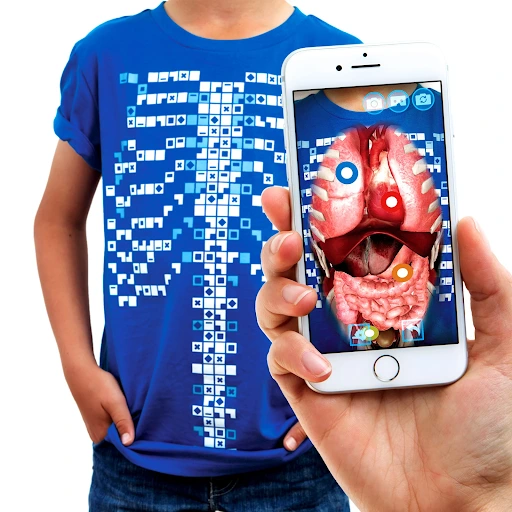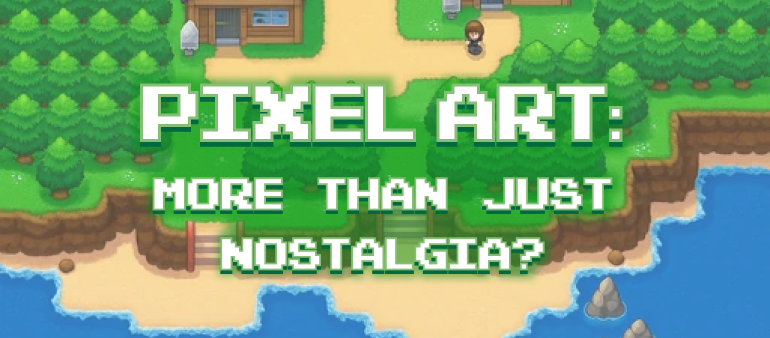For ages, humans have attempted different ways of learning that have been simple and involve no technology. Evidence from the past shows that people acquired knowledge through observing, engaging in apprenticeships, experimenting, and receiving oral instruction well before formal educational systems were established. Today, AR and VR back learning and development with immersive learning (AR and VR-powered). These technologies offer a more individualized and flexible approach to every learner.
Benefits of AR and VR in Learning and Development
Let’s begin with some interesting stats of AR/VR in classrooms:

As per Fortune Business Insights, the size of the global virtual reality in education market is projected to reach USD 13,098.2 million by 2026.
Tech Informed reports that in the US, 54% of teachers and 41% of parents want more use of augmented and virtual reality solutions in the classroom.
Augmented reality is a technology that enhances a real-life environment by adding digital elements to a live view, whereas Virtual reality replaces a real-life environment with a simulated 3-dimensional environment. The workings of these two technologies lead to a stimulating, interactive, and engaging digital experience.
AR and VR engage a user’s senses through both auditory and reading/writing learning styles, as well as visual and kinetic. This adds new elements to the traditional curriculum. Over time, educators are looking for new ways to integrate digital solutions into learning.
1. Increased Student Engagement
Augmented reality (AR) and virtual reality (VR) technologies can increase student engagement and learning outcomes with the interactive nature of immersive learning. With AR and VR, students can explore and interact with objects in a way that would not be possible in the physical world. Learners can explore virtual environments and interact with content, making learning more engaging and impactful.
2. Comprehensive Understanding of Complex concepts
Virtual reality learning allows for a more nuanced exploration of complex topics, helping students to grasp intricate details through experiential learning. Students can learn through virtual field trips or exploring the world's wonders. Students can solve realistic problems in simulated environments and transfer that learning to the real world.
3. Develop spatial intelligence
Spatial intelligence is a fundamental skill for creating and remembering visual images. Individuals with strong spatial intelligence skills often perform well in STEM fields. This is significant for students with disabilities as well, as the use of augmented reality and virtual reality can assist these students in enhancing their spatial intelligence abilities.
4. Enhanced Knowledge Retention
The human brain processes images around 60,000 times faster than text—it takes only 13 milliseconds for the human brain to process an image, and 90% of information transmitted to the brain is visual. (Source: MedTech Intelligence)
The added advantage to the picture superiority effect is interactivity and 3D-view which makes the learning environments all the more impactful and helps students retain information better. Learning through pictures is more effective than text because the human brain processes visual information faster and better than text.
5. Safe Learning Environment
VR can be used to simulate dangerous experiments in a controlled setting, reducing the risk of spills, mishaps, or exposure to hazardous materials. It also helps motivate learners, keeps them engaged, and improves the overall effectiveness of safety training.
6. Easy Accessibility
AR can be used to create collaborative learning experiences because learners can stay connected to their physical surroundings. VR, on the other hand, uses virtual worlds and simulations to allow students to explore and interact with real-world environments that would not be possible otherwise.
Are you looking for an AR-VR game development company?
Best VR and AR Gadgets that Support Learning
Virtual Reality uses a headset to place you in a computer-generated world while Augmented reality uses either a clear visor or smartphone to layer digital images on the real world around you.
Virtual reality headsets use head tracking as a technology that gives the users a 360-degree view of their environment by physically moving their heads. There are two types of VR devices - one, where the headset has an in-built screen that offers great quality graphics like the Oculus Rift and the PlayStation VR. They also come with handheld controllers to track hand movements. The other type of headset uses your phone’s screen as a display and runs completely from your smartphone apps. For instance the Google Cardboard and the Gear VR.
Augmented Reality can be used on devices like smartphones and laptops without the headset and then there are AR headsets that offer features like hand tracking, eye tracking, and spatial mapping with high-quality visuals and spatial audio. For instance the Microsoft HoloLens 2 and the Magic Leap 1.
Interactive Learning and virtual classrooms add interactive elements to traditional learning methods and allow students to explore and interact with 3D models and simulations in a shared digital space.
5 Best Examples of AR and VR in Education
VR and AR tools support experiential and collaborative learning where learners can experience realistic simulations of scenarios that are otherwise difficult, dangerous, or expensive to perform in real life. Students can also explore and manipulate 3D models and phenomena making complex concepts simpler to understand.
1. zSpace
zSpace is a learning platform that uses AR and VR to help students understand complex concepts through an interactive learning experience.

Source: zSpace
Working: It includes a special laptop and a stylus and the technology uses depth perception, the ability to look around, and kinesthetic realism (three sensory characteristics) to enhance the learning experience. Using this experiential platform, students can use their stylus to engage with a virtual 3D object appearing out of the screen through natural movements. To pick up, dissect, and move objects that could otherwise be complex, dangerous, or expensive.
2. Adobe Aero
Adobe Aero is the first tool that allows designers to build and share AR-powered immersive experiences without any coding skills.

Source: Adobe
Working: Adobe Aero can transform any environment into a digital stage and allow artists to add assets, optimize these for AR, take them off the screen and into the real world, bring the audience into the narrative, and provide more information to the viewer - adding a superior level of interactivity to the experience. It also allows the user to easily share their creations.
3. Curiscope Virtuali-Tee
Curiscope is an augmented reality T-shirt and app that creates an augmented learning experience for students to learn about human anatomy through a realistic simulation of anatomy.

Source: Curiscope
Working: The user has to download the app, wear the Virtuali-Tee, scan the tee, and tap on the screen to explore the different systems like the circulatory, respiratory, and digestive systems of the human body in AR.
4. Google Arts & Culture
Google Expeditions is a virtual reality teaching tool built with Google Cardboard. This VR tool is an application built for educational institutions and has a library that offers over 100 virtual trips to the Great Wall of China as well as Mars.
Google Arts & Culture is an online platform developed by Google in partnership with over 500 global art institutions. This VR platform provides access to the collections of some of the world’s most prominent art museums and world-famous destinations at a high-resolution quality.

Source: Museum Fuer Naturkunde Berlin
Working: The platform uses high-resolution image technology with advanced search capabilities and educational tools. The users can search artworks, landmarks, world heritage sites, and digital exhibitions across the globe and virtually walk through the streets and galleries using the same controls as Google Street View or by clicking on the gallery's floor plan.
5. Virtual Speech
Virtual Speech offers AI-powered soft skills training in virtual reality (VR), mixed reality (MR), and online, for soft skills training like public speaking, interviews, sales, leadership, and more.

Source: VirtualSpeech
Working: This platform uses virtual reality (VR) to improve their skills through interactive practice exercises like simulating various-sized audiences and distractions to practice public speaking and build confidence for the real world. They very effectively use VR to enhance their employees' soft skills in a more interactive, engaging way.
Why AR and VR are the Future of Learning and Development
Innovation in learning improved the standard practices and introduced new ones in the field of education - all to fill the fundamental gaps in the learning curriculum. At one point, our learning opportunities were confined to traditional classrooms and training rooms. But now the tech world offers opportunities to explore any topic of choice to an extent that’s far beyond books and lectures. In a VR environment, students have the opportunity to observe their environment, engage with various objects, and collaborate with peers on projects or simulations. With AR, we can overlay digital elements on top of real-world classroom objects.
As more and more people become familiar with the immersive learning capabilities that come with AR and VR, the ways of learning will evolve. The outcomes that will come of it will be fondly positive and impactful.
Numerous use cases and real-life applications are shaping the future of learning and Logic Simplified is at the forefront of encouraging industries and businesses to adopt AR and VR to fill in knowledge gaps and upskill employees. We are a game development company in India offering an experienced team, innovative solutions, and competitive pricing for AR and VR projects across industries. Our experience as a leading augmented and virtual reality game development company makes us understand what it takes! Get in touch with us at enquiry@logicsimplified.com and let’s take this further.
 Get a Quote
Get a Quote










